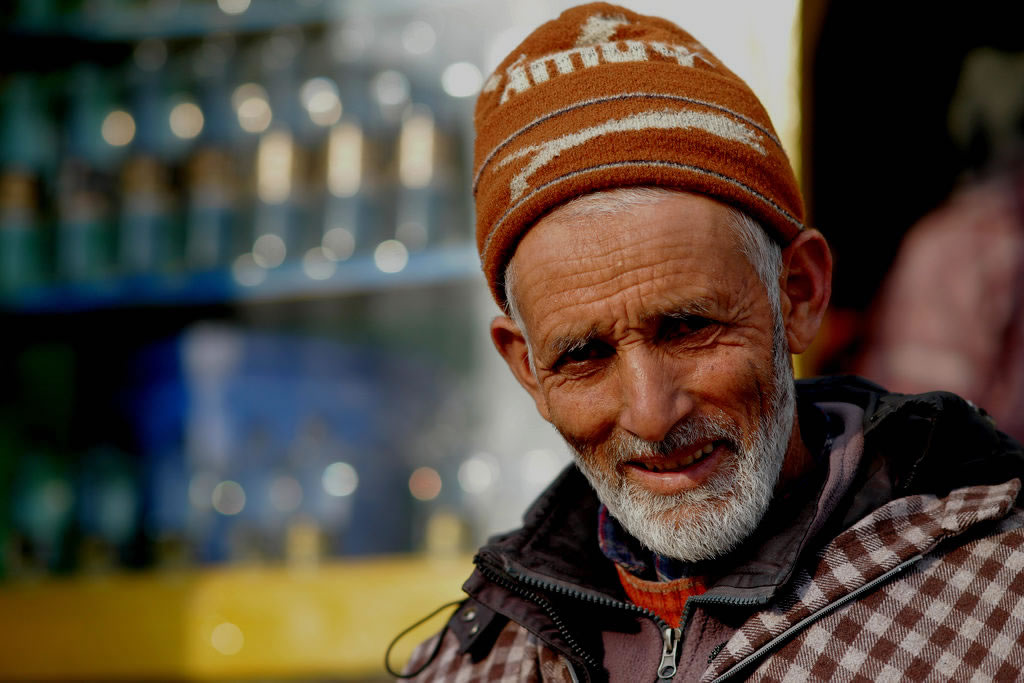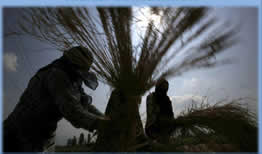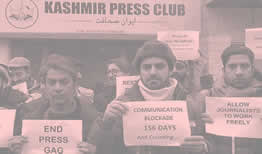Humanitarian Crisis at the LOC: Security of Life and Livelihood
Humanitarian Crisis at the LOC: Security of Life and Livelihood
Abstract:
The following paper concerns the
micro and macroeconomic grievances faced by the people living in close
proximity to the Line of Control (LOC), especially those located within a 5–10
kilometre radius of the area it encompasses. This study posits that the volatile
nature of the line, coupled with its crude boundary demarcation and the
incessant military action surrounding it, have all contributed to the financial
woes of non-combatants present in the region. The research surveys relevant
statistics relating to the impacted trade, commerce and infrastructure of these
vulnerable zones, drawing connections between these factors and developments
across the LOC in both Indian and Pakistani-administered territories.
By:Muhammad bin Abbas
Studying Sociology, Business Studies
at Beaconhouse College Programme
It
concludes that the aforementioned issues would indeed be alleviated in the
absence or betterment of the current LOC. However, it does not present
replacing the line with a “proper” internationally agreed-upon border as a
viable policy recommendation, as such a proposition is unrealistic in the foreseeable
future. Instead, it purports domestic projects, facilitation measures and the
conduction of bilateral CBMs between India and Pakistan to be the general
direction the problem needs to be veered toward to effect positive short-term
and long-term change. The significance of this paper lies in its more localized
approach to addressing the matter, as opposed to the usual grandiose
discussions focusing solely on long-term solutions, unnecessary intervention
and absolutes. The primary objective remains assessing the condition of and
providing empowerment to the locals themselves within the broader context of
India-Pakistan relations.
Keywords:
Line of
Control (LOC), India-Pakistan relations, Kashmir conflict, microeconomic
grievances, macroeconomic challenges, border demarcation, bilateral
confidence-building measures (CBMs), trade disruption, infrastructure
development, regional instability, localized empowerment, community-centric
solutions.
Introduction:
Having endured for over 75 years, the Kashmir issue has yet to simmer down, with India and Pakistan continuing to espouse their claims to the vast area encompassing the vale of Kashmir and beyond, retaining irredentism as a core part of both their historical and current policies. The ceasefire line splitting the former state of Jammu and Kashmir was demarcated in 1949 under UN supervision as a “complement of the suspension of hostilities” after the first Indo-Pak war of the preceding year. Since then, the ceasefire line was never altered to a lasting extent and bisected AJK from the Indian-administered state of Jammu and Kashmir, from which Ladakh was designated a territory in its own right as per the Jammu and Kashmir Reorganisation Act 2019. A significant development surrounding the ceasefire line was specifically its being renamed to the Line of Control in the Simla Agreement of 1972.
The boundary was an honorary one, however and
excursions have been regularly interspersed throughout the course of its
history. Even since the Indo-Pak ceasefire agreement of 2003, escalations
between the armed forces at the LOC have persisted, mostly taking a toll on the
civilians living there and/or their residencies. In light of this, financial
possibilities in the region have been greatly mitigated and a constricted
business environment has been created. Despite the plight of the affected
people being an oft-quoted consideration in most discourses surrounding the
Kashmir issue, markedly little research has been conducted relating to the
impinged economic capacity around the borderline itself.
Beyond doubt, favourable work conditions are an unalienable right, one that Kashmiris living on the borderline have been unjustly deprived of. Due to the designated LOC not being an internationally agreed-upon border, it is highly violable and has thus been perpetually subject to ceasefire violations and skirmishes. Consequently, military mobilizations, acts of violence and artillery shelling on several points along the borderline have seen a significant increase, leading to a highly regrettable but preventable loss of life and security. The continued occurrence of such instances has instilled an atmosphere of fear amongst the general populace, with their fear for their lives superseding any aspirations they may have had. This constant terror preludes psychological effects on the population, such as trauma and distress.
In particular, the psycho-social and
economic hindrances suffered by the border populations owing to the demarcated
line have been neglected in relevant political discussions. For example,
civilians have had past economic opportunities, such as cross-LOC trade (e.g.,
that of Lipa and Neelam), diminished due to indiscriminate firing and
blockading at the border. Other impacts have been afflicted less violently but
proven to be just as restrictive, i.e., the bifurcation of certain villages
through which the line runs. Worse still, mass displacement and forced vacation
of the agricultural land in the area have left several destitute. As one
Kashmiri said to Al-Jazeera: “We are homeless in our homes.”
With around 300 villages situated on
the Pakistani side of the border alone, thousands of Kashmiris have been
affected already, not to mention the struggles of those in IOJK. With the scope
of the situation in mind, this subject in particular has been chosen for this
research as its ambit has seen a drastic resurgence, the consequences of which
are usually only viewed through the Indian or Pakistani lens. With both nations
endeavouring to increase their respective spheres of influence in the area via
the LOC, the effects on the lifestyles and work opportunities of Kashmiris at
the border are frequently overlooked in academia, as highlighting state
contestation and geopolitics are favoured in lieu of them.
To amend this oversight, this paper
is gravitated towards the peoples’ diminished freedom of commerce/income and
minimal economic prospects owing to border conflict. As such, it is only
pertinent to renew interest in and examination of the role of the LOC in these
struggles. While political dialogue regarding Indo-Pak contestation over
Kashmiri territory is important, it is also vital to acknowledge the issues
plaguing those at the border and their livelihoods (as has been done in this
report) so that they may be alleviated in the foreseeable future. With quality
of life and developmental work being directly affected, a holistic
demonstration of this becomes essential. Thus, the significance of this
research lies in its unique and multi-perspective approach to broach the
questions posed and delineate their causes and courses of action.
As this paper is concerned with
theoretical contribution to the subject matter, the report will predominantly
base its findings off of qualitative research, the grounds of which lay on data
analysis and literature review. Consultation of various news reports, articles,
books (both online and physical) and government reports has served as the basis
of data collection for this research. The statistics obtained from these have
been used to contextualise the matter at hand and provide much-needed insight
to support the analysis. A classification model has been adopted to dissect the
different facets of the matter at hand (social, cultural, etc.) and assort them
as prudent. Resultantly, each element was viewed congruently, in relation to
each other, to formulate a suitable analytic framework that addresses and
potentially resolves them as a whole. This approach has reconciled multiple
viewpoints and ensures a comprehensive yet cogent analysis.
The following research is not devoid
of a few limitations, with its foremost shortcoming being the lack of surveys
to gauge the public consensus in the studied areas. Although this venture had
initially been planned and attempted online, the data pool gathered proved to
be insufficient for the drawing of any concrete conclusions. Additionally, the
participants in this activity seldom consisted of Kashmiris or people of
Kashmiri descent and were instead concentrated in South India and Punjab,
Pakistan. Another limitation was the dwindling amount of reasonable official
figures regarding demographics in IOJK, as many tended to be exaggerated and/or
biased in some form.
Although there is plentiful pre-existing literature tackling the loss of life amidst the tensions at the LOC, the economic facet of the issue is not as frequently mentioned, even less so without associating it with the macroeconomic implications on the nations of India and Pakistan as a whole. However, there is no shortage of works examining the strategic factors affecting the target of this research. Peter R. Lavoy’s book, “Asymmetric Warfare in South Asia,” for example, though primarily concerned with the scope of the Kargil War, details the strategic points and important routes upon which the involved armies’ efforts were directed. Such notes may be used to derive the potential impacts faced by the bystanding border-folk. Other works, namely “Kashmir in Conflict: India, Pakistan and the Unfinished War” by Victoria Schofield and The IPA’s project, “Kashmir:
New
Voices, New Approaches,” served as instrumental consultations to impart how
thoroughly the subject of this research concerns Kashmiri sentiment, with the
latter even bringing up the economic impacts of the conflict on Kashmiris,
albeit briefly. These mentions usually pertain to districts further away in
IOJK, with the exception of communities in Poonch. While the selective
literature might initially seem to deviate from the subject matter, it is
important to note that a multifaceted issue such as this is also influenced by
variables outside the domain of this research. Therefore, it has been viewed
through a wider scope, keeping geopolitical contexts in mind while suggesting
potential ways forward.
Impact of Violence at the LOC on
Economic Development in Afflicted Localities
Being a mostly agrarian and pastoral
society, the Kashmiri settlements at the border are highly dependent on land
for cultivation; AJK as a whole has 30–40% of household earnings based on
farming. As such, the economic environment becomes significantly unstable in an
area where access to arable land is necessitated, yet access to said land is
never guaranteed.
Kashmiris have already been
displaced from the fertile meadows of their ancestors in Eastern AJK, with even
the extensively terraced Lipa Valley having lost productive land since 1971. In
Arnia and RS Pura, civilians reported that skirmishes at the LOC may prevent
them from even harvesting the paddy they had already grown; they were
subsequently moved away from their farmland entirely in accordance with India's
border depopulation strategy. The issue would hardly have escalated to such
drastic measures had the border been a formalised one, with reduced CFVs. As
they have had their foremost means of income taken away due to circumstances
beyond their control, the border-dwelling populations cannot be expected to
maintain prosperous households in the face of both terror and rampant
inflation.
Similarly, the rearing of livestock
also poses difficulties due to the conflict at the border. Grazing is severely
reduced due to constant shelling posing threats to the “baikhen” (shacks for
livestock) raised on the slopes, which puts livestock situated within them in
mortal danger. The situation isn’t helped by soil degradation caused by CBWs
used on the more sensitive terraced fields, rendering them unsuitable for
plantation and effectively becoming useless for agricultural practices such as
growing fodder crops. Further still, military action is seldom limited to just
livestock. Owing to the pronounced and sometimes sudden seasonal temperature
changes in the region, shepherds and herders must constantly rotate their stock
and venture to new fields. However, their proximity to the LOC brings them
under the threat of shelling and border crossfire, sparking events of violence
causing bodily harm or even proving fatal.
With all these factors mounted
against local producers, maintaining an output that sufficiently provides for
their families becomes a near impossibility. Even fortunate farmers toil in
fear of the fact that their efforts spanning several months are consistently at
risk of being torn down at any time the border forces re-exert control in the
area through military force. These people are hard-pressed to find other
avenues of generating income, considering how the fertile yet sparsely
populated lands of their abode do not lend as favourably to commerce and
cottage manufacturing as they do to agriculture. When this primary mode of
subsistence is put under pressure, however, any semblance of stability becomes
unattainable and mere survival becomes the new priority. This lack of financial
security and assurance ensures that the Kashmiris caught in the midst of the
conflict zone never rest easy, even in times of declining CFVs; after all, what
use is peace when the war before has left you destitute?
Another significant issue with
regards to the instability at the border is its effect on local architecture.
Regardless of whether you take into account AJK or IOJK, it is imprudent to
deny that villages within 5 kilometres of the LOC on either side have a
vulnerable status. Military mobilisations nearby not only bring the locals
under the line of fire but also their residences and other erected structures,
including livestock holdings, shops, schools, etc. Usually erected in haste,
these venues can hardly be expected to adhere to structural integrity standards
followed elsewhere. Still, it is a distressing notion to assess just how
vulnerable they are, housed in perpetual instability.
Shelling, in particular, inadvertently targets any sort of construction across the border, thus causing the destruction of houses, water and electric supplies, educational centres, etc. This, compounded with the 35% primary school dropout rate in the region on the Pakistani side, renders educational development highly difficult. The Nagdar high school is a notable example, as it was destroyed by Indian shelling and even killed 38 children studying there. Other forms of infrastructural development and economic hubs have also been brought directly under the line of fire. Nearby markets such as the Kel Bazaar and Jura Bazaar were both set ablaze by similar shelling, directly impacting the income and prices of goods for the locals.
The usage of less conventional and reserved arms, such as flamethrowers,
has been documented in similar cases, highlighting the Indian military’s
disregard for needless property damage in their military exercises. These
excursions go beyond spheres of control and assertions of dominance, as the
weapons employed affect a scale of damage that remains prominent even after a
long term. Conflagration and incendiary practices are particularly devastating
as they damage the infrastructure of an area to such an extent that it becomes
irreparable for the locals, as constructing the site anew would require
external funding. The limited connectivity of these regions alongside constant
CFVs results in such support becoming impossible to administer.
With this constant bombardment
limiting the level of construction possible in the afflicted areas and
levelling pre-existing constructions, business activity as a whole becomes
entirely limited in its domain. Inaugurating marketplaces and amenities
requires normalcy, which the borderline is unfortunately deprived of. Economic
productivity, even on a smaller scale, is only entailed by a robust or at least
stable setup of infrastructure serving as a local hub for commerce, trade, etc.
Without access to this, the Kashmiris on the border will only find it
increasingly difficult to build solid trade networks and establish centres of
business that allow for entrepreneurship to arise. As of now, the regional
economy exists in fragility and therefore continues to attract minimal
governmental and non-governmental investment, creating an unfortunate cycle of
economic adversity. With this in mind, local economic growth remains unlikely
and even economic internalisation is not fully feasible. And so, any
improvement in the quality of life for the border populations is never quite
brought about.
Effects of Kashmir's Delimitation on Economic Prospects for
Locals
Historically, the regions of Jammu and Kashmir have been thoroughly connected for the conduction of trade activity and the passage of East-West traders, as shown by the ever-thriving internal trade of rock salt, fruit, honey and nuts. More recently, India and Pakistan resumed cross-LOC trade in 2008 as a CBM, reinstating the historical routes connecting Muzaffarabad and Srinagar as well as Rawalakot and Poonch. By July 2011, barter allowance was extended, with a greater volume of goods being exchanged across the border at a remarkable four times a week. Carpets, shawls and the like were also included in the exchange, reinvigorating the formerly underdeveloped cottage and textile industries in the relevant areas. However, in 2019, upon India’s abrogation of Article 370, Pakistan’s hand was forced to end the trade agreement in protest.
In response, India implemented its own suspension of
trade along the border, especially that of Uri and Chakan Da Bagh.
Consequently, the relatively jovial atmosphere of cooperation which had
culminated around both sides of the LOC was replaced with despondency and
financial strife. As the Trade Facilitation Centres along the border ceased
operation, the tradesmen who had managed their dealings up to that point were
inconvenienced almost immediately. The cessation of the aforementioned
Uri-Chakothi and Tetrinote-Chakan Da Bagh trade alone directly impacted around
1,200 traders on both sides of the border.
Overall, the economic implications
for both populations were even more dire, with the loss of estimated freight
revenue streams for regional transporters amounting to 66.4 crores (INR). This
sudden loss of labour and economic disruption highlights how the delimitation
at the LOC is entirely a hindrance, one which limits the extent to which
Kashmiris can cooperate with like-minded businesses across the border and have
their economy flourish through mutually beneficial trade. The Indo-Pak corridor
has historically proven to be too fruitful to ignore completely; hence the
trade volume flowing through it has continued at considerable amounts, despite
the political tensions between the neighbouring nations. Logic dictates that
opening up the vale of Kashmir on the trading front will offer similarly
prosperous results. As Victoria Schofield puts it: “Even in the darkest days of
the Cold War, when West and East Berlin were divided, there was a Checkpoint
Charlie through which people crossed from one side to the other. Why then not a
Checkpoint Chakothi? It would be a small step which might mean a new
beginning.”
Delimitation has also impeded
mutually beneficial Indo-Pak border agreements, since the problematic and
heavily contested LOC lacks the permanence and relative stability of the rest
of the internationally agreed-upon boundary of the two countries. As per the
Karachi Agreement of 1949, both nations had come to the consensus that military
construction within half a kilometre of the border, later amended to 150 metres
in the Border Ground Rules Agreement, was to be restricted. However, when
taking into account their held territories in Kashmir, neither stipulation has
been adhered to or considered as seriously as they should have been, with
either defensive construction at the border seeing a continuance or established
camps refusing to relocate.
When viewing this from a civilian
perspective, constructions at the border, such as the border outpost at Pittal,
only impede future development of local villages, with defence spending once
more gaining precedence in the area over civilian infrastructure. As such, the
issue will only persist as each side is goaded to respond to the other’s
initiative and renew out-posting. Subsequently, not only does regular
construction become impossible, but any pre-existing buildings also continue to
be pressurised, falling under more and more spheres of artillery lines, hardly
ideal candidates to expand into market centres.
Tourism is another activity that
presents an incomparable opportunity for the border people to foster economic
connectivity and an influx of wealth through both domestic and international
tourism. However, this expedient is rendered invalid due to the instability and
conflict at the LOC; for how could the secure passage and return of tourists be
guaranteed when even the locals live in constant fear of threats to their
lives? Although the rest of AJK has seen significant faith placed in its
potential for tourism through the utilisation of its scenic beauty, localities
around the LOC itself remain bereft of this faith and thus the chance to
develop tourist sites remains void. This is largely due to the impractical
delimitation of the borderline itself, which enables violent cross-LOC
exchanges and skirmishes that negate any sort of tourism-related prospects at
all. While the introduction and facilitation of tourism across the entire LOC
is an understandably unrealistic ideal, there should be no qualms with the
development of tourism in less militarised zones adjacent to the Line, such as
areas on the Eastern front of Upper Neelam.
Civilian interest in nearby regions is indubitable and would be seeing a significant surge akin to the flare of attention received by other parts of Northern Pakistan if not for the tumultuous situation at the border. Foreign attraction would also have been possible when recalling the fame of Kashmir’s valleys, magnificent sites such as that of the Pir Panjal and intricate histories of various other locations. While such tourism is not non-existent, the vast majority favour visiting areas much further from the LOC, such as Srinagar in India and Muzaffarabad in Pakistan.
This has undone what would otherwise have been a great source of
income for people living closer to the Line. If a tourist industry were to
spark up here, a multitude of jobs would be created for the locals as they
could explore this opportunity without any trepidation. External investment
could be seen as the area would further develop, culminating in a much-needed
influx of capital and developmental projects. Additionally, this would enable
the transitioning of local workers from the informal sector to the formal, thus
ensuring a greater degree of financial security and rights. Resultantly,
tourism could well be the key to bolstering economic growth and connectivity
across the LOC.
Conclusion:
Summarily, the research indicates
that the regional conflict has sincerely adverse implications for the
livelihood of local communities caught amidst it. The microeconomic struggles
in the face of this only coalesce into even direr macroeconomic ones throughout
the border territories.
The ever-present threat to the
security of life and work when discussing the Kashmiris living around the LOC
cannot be overstated. Although the Kashmir issue poses and has posed broader
ramifications for the entirety of India and Pakistan, its first and foremost
consequences are imparted upon the people caught in its fray, the Kashmiris
themselves. While those amongst them based in a city like Muzaffarabad, for example,
may be spared from the immediate and direct impacts of contestation at the
border, families in close proximity to it are forced to suffer literal and
figurative wounds from powers they never crossed. Traditional methods of income
have all but become unattainable as military occupation overruns their
homeland, distilling discomfort and anxiety as it does. Even newer modes of
income, such as adapting to tourism, become invalid as well.
On that account, it becomes essential to tackle the situation on a societal and governmental level. While the swift reinstatement of cross-LOC trade is an unrealistic ideal, especially when considering the less-than-negotiable stance of the BJP, a few CBMs are still a diplomatic possibility. For example, the old trade routes could be redirected to pass further south, allowing them to open up at a more agreeable location for both countries. In contrast to the pre-2019 situation, it is possible to reopen only one or two of the prior trading hubs, concentrating all exchanges at just these points to minimise the required surveillance along the border.
To avoid security dilemmas, the states could agree to limit this trade
to official wares for the time being. Admittedly, this would inconvenience
district retailers, but through thorough examination and trade centre
registration processes, their interests may be catered to as well. The
respective intelligence of both parties could share reports from over the
border to ensure there are no discrepancies in the process, building further confidence
and security so that the trade may remain sustainable. Due to the sensitive
relationship between the neighbouring countries, any immediate changes besides
these would be unwise. Rather, this system could gradually be transitioned back
to the old barter system, perhaps in the successive decade or so once the
initial trepidation at across-the-border cooperation is overcome.
Initiatives in AJK, on the other
hand, can be carried out with far greater confidence. To safeguard its border
citizens, the Pakistani government must increment its placements of artillery
protection walls along the roads, possibly extending the coverage onwards from
Jagran till before the outskirts of Taobat. In less connected areas along the
borderline, however, the government must increase the distribution of bunkers
allotted to the boundaries of each district to ensure the safety of Kashmiris
in case of indiscriminate firing and the like.
References:
1.
AJK
Bureau of Statistics. AZAD JAMMU &
KASHMIR, AT A GLANCE 2015. Muzaffarabad: AJK Bureau of Statistics, 2017.
2.
Aman,
Zutshi. “Farmers in R.S. Pura Staging
Protest Sit-in after Being ‘forcibly Evicted from Their Lands’: Kashmir
Times, May 8, 2024. https://kashmirtimes.com/farmers-protesting-in-jammu-against-eviction/
3.
Sherazi, Iftikhar, et al., “Two
Martyred, One Injured after Indian Forces Open Fire at Shepherds at LOC: ISPR.”
DAWN.COM, July 26, 2023. https://www.dawn.com/news/1761520/two-martyred-one-injured-after-indian-forces-open-fire-at-shepherds-at-loc-ispr.
4.
Zafar,
Saleem, et al. “Education under Border
Shelling: Evidence from Schools near Line of Control in Azad Jammu and
Kashmir,” Global Educational Studies Review VIII no. II (June 30,
2023): 367–76. https://doi.org/10.31703/gesr.2023(viii-ii).33.
5.
Shaheen,
Akhtar. publication, LIVING ON THE
FRONTLINES: PERSPECTIVE FROM THE NEELUM VALLEY , 1st ed., vol. 21, Margalla
Papers (Archive; Islamabad: NDU, 2017). https://margallapapers.ndu.edu.pk/site/issue/view/12/130.
6.
Shaheen,
Akhtar. publication, LIVING ON THE
FRONTLINES: PERSPECTIVE FROM THE NEELUM VALLEY , 1st ed., vol. 21, Margalla
Papers (Archive; Islamabad: NDU, 2017).
https://margallapapers.ndu.edu.pk/site/issue/view/12/130.
7.
Anando,
Bhakto. “How Suspension of Cross-Loc
Trade Shattered Uri’s Economy,” Frontline. January 30, 2024.
https://frontline.thehindu.com/economy/how-suspension-of-cross-loc-trade-shattered-uri-economy-kashmir-leaves-thousands-out-in-the-cold/article67751572.ece.
8.
Surya Valliappan,
Krishna. “Caught in the Crossfire:
Tension and Trade along the Line of Control,” Carnegie Endowment for
International Peace, accessed Septemberr 2, 2024.
https://carnegieendowment.org/posts/2022/06/caught-in-the-crossfire-tension-and-trade-along-the-line-of-control?lang=en.
9.
Schofield, Victoria. Kashmir in Conflict: India, Pakistan and the
Unfinished War. London: I.B Taurus, 2000.
10. Happymon, Jacob. United States
Institute of Peace report. Ceasefire
violations in Jammu and Kashmir: A line on fire. 978-1-60127-672–8 (2017). https://www.usip.org/sites/default/files/PW131-Ceasefire-Violations-in-Jammu-and-Kashmir-A-Line-on-Fire.pdf.
11.
Tariq,
Naqash. “Azad Kashmir to Celebrate 2019
as ‘Tourism Year,’”. DAWN.COM, November 15, 2018.
https://www.dawn.com/news/1445629.
Related Research Papers




























